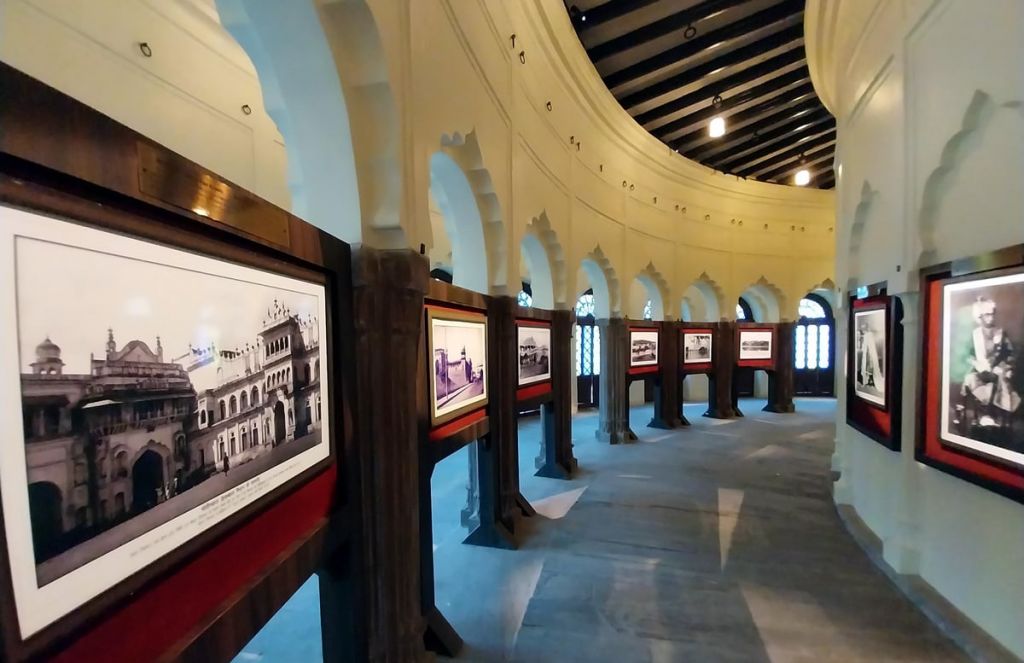
The harried present, with its malls, flyovers, honing cars, mobile phones, and concrete roads blooms. The future breathes like a hidden bud. Yet, the past is ever present. It keeps staring through the buildings and artefacts. This is the beauty of Bhopal. One such building, in which the past gathers its lores, is Gulshan-e-Alam, now called Gol Ghar. Once, it resonated with the pipe-ups of winged guests.
The building was designed to suit them. Gold and silver fibres were kept to be part of their nests. The Begums of Bhopal were aware of the importance of protecting the environment. Then it was an aviary and christened as Chidi Khana. This circular edifice consists of 44 doors with elegant curves, including the ones in the upper chamber. Each door looks alike. There is a staircase to reach the upper chamber, but it is not open to the public.
Outside Gol Ghar, it is the chaotic present that takes pride in noisy cars, two-wheelers and vendors. Inside, the silent past murmurs. Just as a visitor looks at the photographs hanging from the walls, he feels as if he had gone far away from the noisy world. The clamours slowly fade. The bygones begin to stare at him and whisper into his heart: Keep silent. Listen to the chants of yore.
There is a photograph of the inauguration of Bhopal railway station in 1884. It was Nawab Shah Jahan Begum who took the initiative in laying railway lines. The foundation laying ceremony of Minto Hall in 1920 is another important photograph that tells the tale of Bhopal’s history. It has been rechristened as Kushabhau Thakre Hall. The photograph of the inauguration of Lady Lansdowne Hospital, which is now known as Sultania Zanana Hospital, is a piece of important documents for students of history and viewers.
The photographs of the family members of the Nawabs, including the one of Dost Mohammad Khan, are a rare treat to the lovers of history. The photograph of Nawab Shah Jahan Begum is vivacious. As soon as a visitor looks at it, it seems she is telling him to remain quiet and feel her stately presence. She loved tranquillity. There is a photograph of Rahat Manzil Kothi where Mahatma Gandhi stayed during his visit to Bhopal in 1930. There are many more to see. There are several articles used by the Nawabs. The upper chamber of the building has a dome with cylindrical pillars.
Once a Persian style garden, called Jannat Bagh, existed. Time destroyed the garden. It is being restored. Shah Jahan Begum often used the building as her office. Afterwards, birds were kept there. Music added more placidity to the serenity of evening twilight and mingled with the chirping of birds returning to their nests in Gulshan-e-Alam. When the rule of Nawabs ended, Gol Ghar fell prey to neglect, and turned into ruins.
The building has restored and turned into a museum. There are plans to set up shops for selling traditional items in other parts of the building which has several rooms and were once used as horse barns. According to historians, Munshi Hasan Khan and Austin Cook designed the building which looks like a cage from outside, but it provides freedom to breathe in fresh air unlike an iron pen where birds are kept.
The winged guests had enough space to fly and sing. There were plants of various species to create a natural environment for them. Though there are no birds now, if visitors wait and prick up their ears, they can still hear the peeps, coming from the distant past. This is the inner world of Gole Ghar that stands like a silent sage.